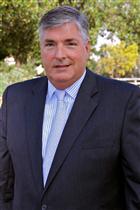
Greetings—
This time of year we are reminded of the many reasons we have to be thankful – not just to be alive, but to be living where we do and doing what we do.
My wife, Elizabeth, and I are profoundly grateful to be here in Fresno, as we celebrate a year of working with so many dedicated to making this a better place.
Many of you will not be surprised by the reactions of friends and family in southern California when we announced we were moving to Fresno to pursue opportunities with a community foundation poised for ambitious growth. “Fresno?” more than a few asked with doubt in their voices.
They don’t know Fresno. Our first year has been enriched by the friends, neighbors, colleagues and partners we have found here in the Central Valley, and by the warmth of the welcome.
World-class hospitality and bonsai, too
From the first home-cooked dinner as guests to enjoying the bounty of this fertile valley, we were warmly welcomed. From the richness of its produce and the depth of its cultural institutions, from a new world-class bonsai garden to the vibrancy of arts produced locally, this valley delighted us with its abundance of gifts.
As the new head of a community foundation, I’ve inherited all sorts of relationships —from donors to agencies, funding partners to community leaders, to colleagues, grantees, nonprofit leaders, advisors and elected officials. These, too, have been welcoming, and remind me of how much we achieve working together.
We discovered a vibrancy here that can be missed from the coastal perspective. We found it in the remarkable seasonal delights of Christmas Tree Lane in Old Fig Garden, to the variety of concerts, lectures, festivals, authors, poetry —including that of the new U.S. poet laureate — and the famed Shakespeare in the Park, not to mention the rich ideas and compelling futures emerging from universities across the valley.
Deeply rooted churches and faith communities connect across generations and boundaries, anchors in neighborhoods across the valley; from trunk parties at Halloween to music, worship and active mission outreach – around the world and in the local neighborhood, these folks try hard to live out their faith. We have found a welcome home here too.
Seasons happen, each with its own beauty
The Valley’s proximity to famed national parks is only one asset among many. It also wears its beauty well. It seemed as if my morning commute for months has been a celebration of the bounty of flowering fruit trees – white, pink, red and pink again; now it is seasonally attired in brilliant oranges, red, brown and sharp yellows. Seasons live here, in ways they don’t in California’s coastal climate.
And yes, the rumors of hot weather were indeed true. But so were delicious peaches, locally sourced ice cream and the welcome splash of a swimming pool.
Central Valley Community Foundation Board and Staff
And as for the Central Valley Community Foundation, formerly the Fresno Regional Foundation, I am thankful for the role it plays in this region, and for the wisdom of its founders almost 50 years ago to establish this institution, and those generous donors who have fueled and sustained its health over the years.
I am grateful to our board for bringing me here, and for their willingness to work together to examine, imagine and deliver a future worthy of our mission, our potential and our community. Each contributed personally to the new Center for Community’s launch, a tremendous vote of confidence.
I am thankful too for the work of my colleagues, and that of my predecessor, to build an institution with the promise and growth it is a privilege to harness, nurture and deliver, as we write the foundation’s next chapter.
The power of two words
I learned years ago the most powerful words in the nonprofit lexicon are straightforward: thank you.
So thank you for blessing my Thanksgiving with profound gratitude for all of this.
Add cranberries, a little rain and pecan pie – and how can I help to be anything but be thankful for the perfect long weekend?
Happy Thanksgiving.

Comments